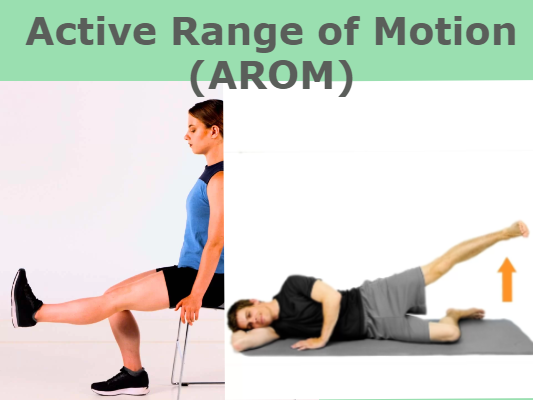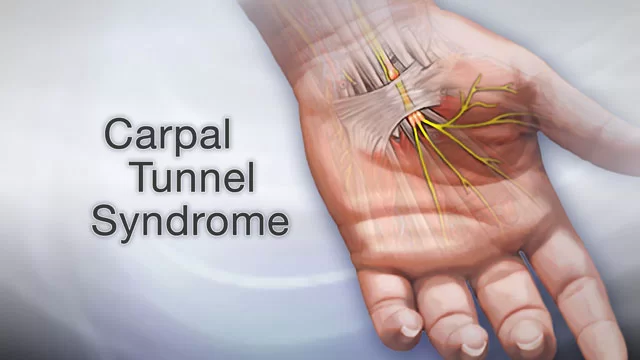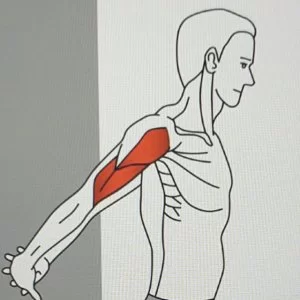Breathing Exercises for Hypertension: A Natural Approach to Lowering Blood Pressure
Breathing exercises can be a valuable addition to a holistic approach for managing and lowering blood pressure. These techniques involve deliberate control of your breath to promote relaxation, reduce stress, and ultimately, help lower blood pressure.
In this guide, we will explore various breathing exercises that have shown promise in contributing to better blood pressure management, providing you with tools to incorporate into your daily routine for improved cardiovascular health.
What does being diagnosed with High Blood Pressure mean?
Hypertension, another name for high blood pressure, is a measurement of the resistance your blood encounters as it passes through your blood arteries. Blood flow restriction in narrow arteries can eventually lead to high blood pressure and other, more serious problems including heart disease.
High blood pressure damages your blood vessels and organs over time, especially your brain, heart, eyes, and kidneys. While the process of creating high blood pressure takes time (often with virtually any systems that you’d be aware of), it does so gradually.
To explain it another way, it’s a good idea to regulate your blood pressure.
Why does Blood Pressure rise?
There are several factors that might raise blood pressure, some of which are easier to identify than others. Unknown causes of high blood pressure can be associated with a number of factors, including:
Genetics might make you more likely to have high blood pressure. Physical changes like aging Environmental variables throughout time, such as a bad diet, inactivity, and high levels of stress. Additional, simpler possible factors for high blood pressure include:
- Kidney disease
- Obstructive sleep apnea
- Congenital heart defects
- Thyroid problems
- Side effects of certain medications
- Illegal drug use
- Alcohol abuse
- Adrenal overactivity or fatigue
- Endocrine tumors
There are alternative methods for dealing with high blood pressure before it becomes unmanageable, even though taking a blood pressure medication may be the best choice for you.
Can breathing techniques quickly decrease Blood Pressure?
Systolic and diastolic blood pressure are measured through blood pressure testing. when DBP measures pressure when the heart is at rest, SBP measures pressure as the heart beats. Millimeters of mercury (mm Hg) are used by physicians to measure both kinds.
The goal of breathing exercises is often to reduce the number of breaths per minute.
According to the 2023 scoping study, hypertensive people’s SBP might drop by 8.6 mm Hg and their DBP could drop by 4.9 mm Hg after just two minutes of slow, deep breathing.
Are safe breathing techniques for lowering Blood Pressure?
The majority of people can safely and easily perform breathing exercises. Breathing exercises can improve a person’s ability to breathe, according to the American Lung Association.
When attempting to reduce their blood pressure, a person might learn a variety of breathing techniques.
Exercises for breathing that Lower Blood Pressure
4-7-8 Breathing Exercise
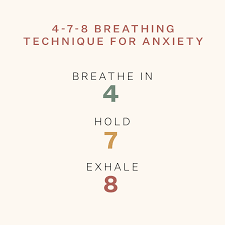
Blood pressure may be easily and quickly lowered by using the 4-7-8 breathing exercise. You can perform it easily at anywhere, at accordance with your time, and it only takes a few minutes. Take these easy actions:
- As you silently count to four, exhale completely through your nostrils.
- Hold your breath for seven counts.
- Exhale for eight counts via your mouth.
- Three or four times in a row, do this method again.
- To make the practice more relaxing and productive, try the following ideas:
- Work your way up to four, seven, and eight seconds gradually if you are unable to do these counts comfortably. Start with two, three, and four seconds, if possible. To exhale for twice as long as you inhale is the key objective.
- Throughout the entire exercise, tuck your tongue’s tip beneath your upper front teeth. Your upper airway is opened by a properly positioned tongue.
- To make sure you’re regularly exhaling at the right pace, exhale loudly out of your mouth while generating a soft whooshing sound.
- At least twice daily, perform this exercise again. Even more beneficial is more regularly!
- You can increase to eight breaths in a row if you’ve been doing this practice for a few months. If you begin to feel dizzy, be careful to stop and rest.
Equal Breathing, or Sama Vritti
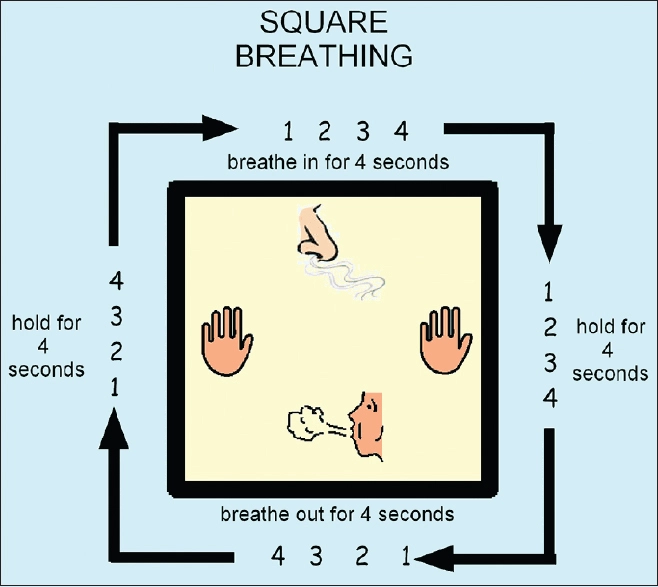
Sama Vritti, also known as equal breathing, focuses on taking regular breaths. The goal of this workout is to balance your body and cleanse your thoughts. It is a breathing method that has a relaxing impact that lowers tension, decreases your heart rate, and can help with blood pressure stabilization.
This workout may be done whenever and wherever you feel comfortable. It works especially well to help you unwind before bed because sleep conditions like sleep apnea and insomnia can cause high blood pressure.
Sama Vritti is quite easy and just takes a little while. The following description shows how to perform it:
- Relax in a peaceful, welcoming environment. Put your eyes closed and stretch your entire body.
- Inhale slowly through your nose while counting to four in silence.
- Hold your breath for four counts.
- To the count of four, let out a mouthful of air.
- Continue to hold your breath for another four counts before starting again.
- Every day, perform this breathing cycle two to six times.
- Reduce the count to two or three seconds if you are having trouble breathing until it becomes more bearable. Maintaining an equal ratio is essential.
- Inhale deeply and let the air fill your abdomen. Your chest should hardly or not at all move.
- You can continue this practice for up to ten minutes as your familiarity with Sama Vritti grows.
30-Second Breathing Exercise
The Japanese Society of Hypertension claims that breathing deeply six times in a 30-second period considerably lowers blood pressure. It’s simple and convenient to control tension and encourage relaxation by engaging in this 30-second breathing practice. You only need to:
- Locate a calm area where you can meditate peacefully.
- Set a 30-second timer, close your eyes, and inhale deeply six times. Breathe in slowly through your nose, then slowly exhale it out through your mouth. It should take roughly five seconds between breaths.
- Do this workout at least once per day.
- For advice on how to perfect this method, look at these suggestions:
- Don’t breathe too rapidly, please. The recommended amount of time for a leisurely, relaxed breath is five seconds.
- To breathe easily and without physical exertion, try to maintain a straight spine.
- For optimal relaxation, repeat this practice throughout the day.
Diaphragmatic Breathing
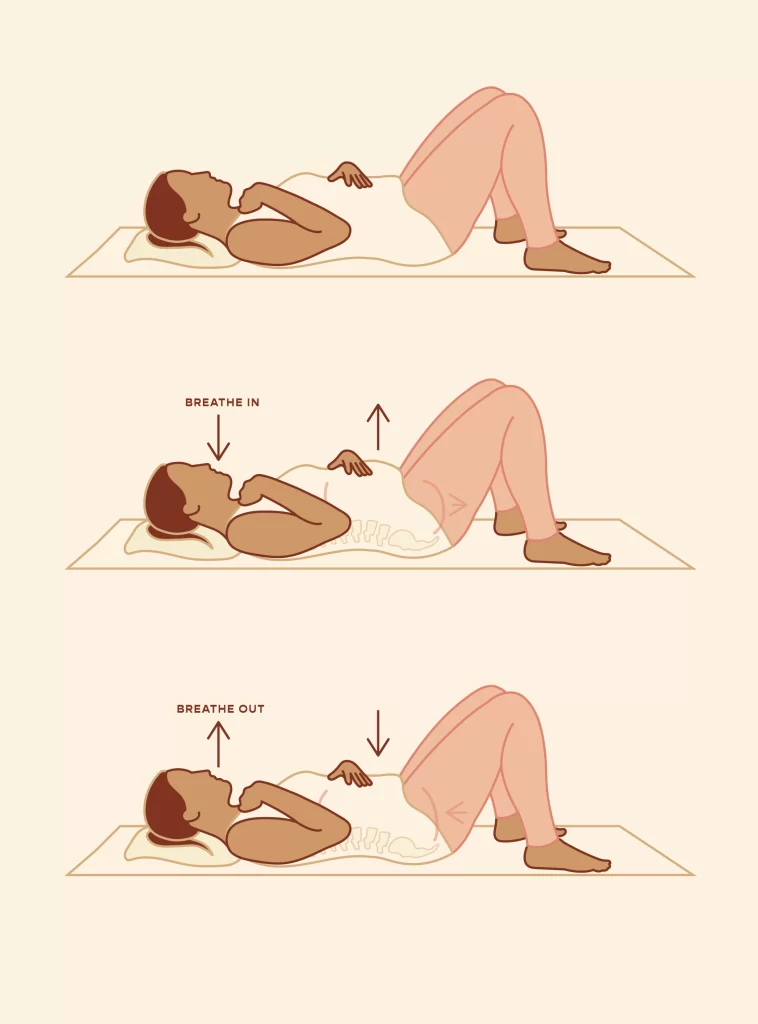
Another appreciated breathing technique for lowering blood pressure is diaphragmatic breathing. It focuses on strengthening your diaphragm, the muscle that facilitates breathing beneath your lungs. By improving your diaphragmatic breathing technique, you may breathe more effectively and provide your body with more oxygen. Additionally, it maintains blood flow, which raises blood pressure. Following are the steps for properly performing diaphragmatic breathing:
- Lay on your back with your legs bent and a cushion under your neck to raise it to the same level as the rest of your spine.
- To assist you in keeping track of your breathing, place one hand on your chest and the other just below your ribs.
- Inhale slowly through your nose while visualizing air filling your abdomen. To make sure you’re extending your diaphragm properly, raise the hand below your ribs while holding the hand still on your chest.
- Exhale gradually out of your mouth. Gently lower your hand so that it is below your ribcage.
- Three to four times a day, repeat this method for five to ten minutes.
- To make this activity more practical and effective, use the following strategies:
- To lower your blood pressure, gradually extend the duration and frequency of your diaphragmatic breathing. Even placing a book on your abdomen can increase the difficulty and effectiveness.
- Once you feel at ease carrying out this exercise while lying down, you may also do it while seated or standing.
- 50% of persons with hypertension have been impacted.
Device-guided breathing
Some people like to practice their breathing exercises with the aid of technology. According to a 2019 report, participants who routinely used the RESPeRATE gadget for 15 minutes a day had their blood pressure drop.
An FDA-approved gadget called RESPeRATE employs a sensor to monitor a person’s breathing pattern and produces noises to serve as a cue for inhaling and exhaling.
In order to gradually raise their exhalation rate and decrease their breathing, the person is supposed to synchronize their breathing with the noises from the electronic device.
Deep Breaths
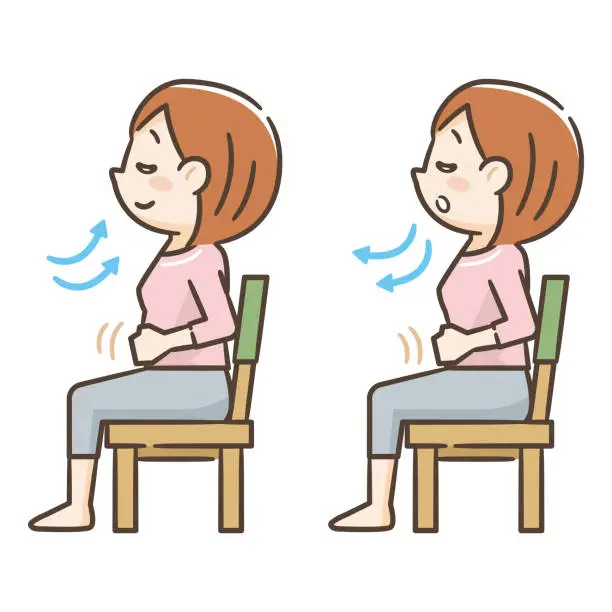
Simply breathing deeply is the first activity you may do to lower high blood pressure.
You only need to close your eyes and concentrate on breathing for 30 seconds. You’ll be amazed at how different you’ll feel if you simply decide to take deep breaths every day.
- Lie down or sit comfortably in a peaceful location. As much as you can, relax your body by closing your eyes.
- Set a 30-second timer.
- Focus on your intake and expiration as you take six calm, deep breaths through your nose and out of your mouth or nose.
- Repeat as necessary.
Adapting Your Lifestyle Can Lower Blood Pressure
Your health may be significantly affected by changing your lifestyle. You may also try these suggestions to decrease your blood pressure in addition to daily breathing exercises:
- Quit smoking
- Limit alcohol consumption
- Consume less caffeine
- Exercise daily
- Lose weight
- Eat healthier foods
- Reduce stress
- Prioritize sleep
Summary
A person’s blood pressure can be lowered through breathing exercises. They are easy to execute, and most individuals see positive outcomes if they frequently practice.
The majority of breathing exercises call you to intentionally slow down breathing and take deeper breaths. These breathing exercises lower blood pressure when done properly and with certain care though they are easy to perform and simpler make sure to follow the commands as mentioned in the above article.
FAQs
Can breathing exercises reduce blood pressure?
There is growing proof that breathing muscles that are stronger are also advantageous. According to recent studies, exercising the diaphragm and other breathing muscles regularly can lower blood pressure and support heart health.
Can lack of sleep cause high blood pressure?
Sleep is intended to help the body in managing the hormones needed to regulate stress and metabolism. Changes in hormones might develop over time as a result of sleep deprivation. Changes in hormone levels can lead to high blood pressure and other heart disease risk factors.
What type of breathing lowers blood pressure?
For those with hypertension, slow breathing can be used as an additional, non-pharmacological treatment to lower blood pressure.
What is the 4 7 8 breathing technique?
4-7-8 Breathing: Functions, Advantages, and Applications
The 4-7-8 breathing technique demands the practice of an inhalation for 4 seconds, a breath hold for 7 seconds, and an exhalation for 8 seconds. This breathing exercise aims to help people relax or fall asleep.
How long does deep breathing lower BP?
The goal of breathing exercises is often to reduce the number of breaths per minute. According to the 2023 scoping study, hypertensive people’s SBP might drop by 8.6 mm Hg and their DBP could drop by 4.9 mm Hg after just two minutes of slow, deep breathing.
References
Breathing Techniques That Lower Your Blood Pressure. Modern Heart and Vascular. https://www.modernheartandvascular.com/breathing-techniques-that-lower-blood-pressure/
How breathing techniques can influence blood pressure. https://www.medicalnewstoday.com/articles/breathing-exercises-to-lower-blood-pressure
Breathing Exercises to Help Lower Blood Pressure Naturally. (n.d.). Physio Inq. https://www.physioinq.com.au/blog/how-breathing-can-help-reduce-blood-pressure



